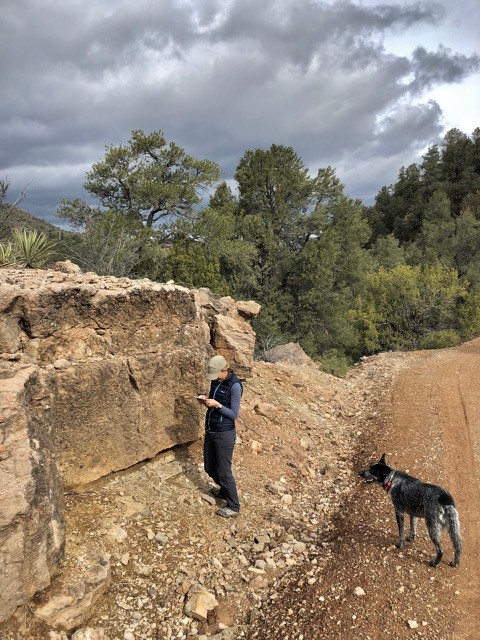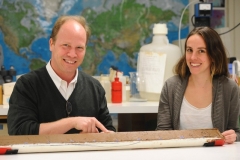Centennial E5 – When the Sahara was Green

Jess Tierney Arizona field site (With blue heeler field buddy). Credit: Jess Tierney
About 11,000 years ago, the Sahara desert turned green. The region received ten times the rain that falls there now, filling lakes and supporting savannahs, woodlands, and human communities. This was not the first time our species had encountered a green Sahara. Every 20,000 years or so, the wobble in Earth’s axis called precession brings the northern hemisphere a little closer to the Sun in summer, and more rain to the Sahara. The wet period ended abruptly, 5,000 years ago, leaving rock art and artifacts in the sand. But the people were not gone, they had just moved. As the sands took back the Sahara, people congregated along the Nile valley, and the Egyptian civilizations arose.
Our guest Jessica Tierney is interested in how climate changes influence human migrations. Tierney is a paleoclimatologist at the University of Arizona in Tucson where she studies past climate change, from the time of the dinosaurs, to the human diaspora 60,000 years ago, to more modern shifts in North America’s own Southwest monsoon. She learns about Earth’s past climate from mud laid down on the ocean floor over the millennia like a column stretching backward in time. In this centennial episode, she reveals the secrets of the mud, how humans may have weathered climate swings of the past, and what the past can tell us about our warming world.
This episode was produced by Liza Lester and mixed by Collin Warren.
If you are interested in how scientists core mud from the bottom of the ocean, don’t miss our past episode “Deep sea drilling with Dawn.”



